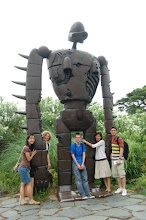Interview Magazine
A Satisfactory Web Presence
based on the blog
comparinginterviews.blogspot.com
by Justin McCraw
for Jacquie Marino
Mirroring its print publication, the Code and Theory-designed Interview Web site offers adequate functionality in an aesthetically pleasing package. While a few of the features listed on the Web site fail to meet expectations, the overall experience is suitable for the type of magazine Interview purports to be. With an already-available iPhone app and a forthcoming iPad app, Interview is prepared to meet the future of mobile magazine technology head-on while maintaining the integral design of its print offering.
Interview's Web Site
Featureset
Interview's Web site features a variety of departments, as listed throughout this weekly blog. Features include Fashion, Music, Art, Film, Culture, Video, Nightlife, Calendar, Blogs and Archives. Most of these departments include direct content from the magazine accentuated with Web features. For example, under the Music feature head, an article about Justin Bieber not only included photographs and an editorial, but also a Playlist.com sample of four of his current songs. The Calendar section, as detailed in the blog above, lists a month of events with accompanying photos and articles related to such events.
While much of the content comes directly from the print magazine, Interview's Blogs section is updated daily with Web-centric news. Blogs from the editorial department may include photographs, slideshows, videos, music, etc., and account for most of the fresh content on the site. One example is a post about a Michael Jackson portrait selling on eBay with a starting bid of $2.75 million. While the content may be quirkier than what typically may be found in the magazine, it still revolves around celebrity and the arts, as Warhol would have wanted.
Widgets and Gizmos
Apart from the feature content itself, Interview's Web site offers a plethora of widgets – small programs meant to do specific things within the site. These enhancements include My Library, In the News, Quoted, Browse, Cultural Roulette and Just Captured.
My Library offers user's the ability to register a user name, which can then be used to store saved articles – hence the Library name – as well as to identify users commenting on articles. In the News is an updated view of Interview's Twitter stream, while Quoted takes interesting, and random, quotes from articles and displays them in the same manner a drop quote would appear in the print publication, only online. Clicking on the quote produces the article it originated from. Browse allows a user to navigate alphabetically through a menagerie of content, whereas Cultural Roulette gives it all to chance and offers up a randomly selected article, once activated. Finally, Just Captured is a collection of photographs submitted by users and famous people alike. One of my favorite aspects of the magazine, but in a more communal, online form.
Overall, the widgets and gizmos add to the depth of the Web site while offering reasons to make repeat visits. Since the layout of the site follows a strict grid and color palette, these touches work to contrast the content with the layout's starkness. In this regard, Interview succeeds in creating an almost direct replica of its magazine while embracing the fluidity of the Internet and the human compulsion to click.
Disappointments and Conclusions
While the Web site offers a variety of things to look at and do, it takes time to notice these features and even more time to know why you should care. Such features as My Library don't seem very useful beyond the Interview Web site, while other ancillary offerings, such as its newsletters, don't work at all. I've signed up for three different newsletters and have never received any. While this may be a feature the team is currently working on, that it's being offered now leads me to expect content delivery, which is disappointedly absent.
In the end, the Web site doesn't do anything overly wrong as much as it doesn't do all that it purports to do. If Interview could produce better uses for its login systems, deliver its advertised newsletters and better integrate social media, the site could be a success. As it stands, however, Interview's Web site offers an adequate Web experience that is soon forgotten. Personally, I receive everything I need from the print magazine. As such, Interview's Web site leaves me with little reason to keep coming back. While the blog posts are interesting, I'm not inclined to read about Interview-styled celebrity and arts daily. Whereas the magazine is a treat to enjoy in bed or on the metro, the Web site is an aftertaste, the quiet displacement of an idea that was better the first bite.









